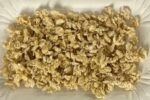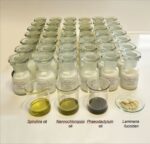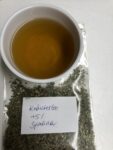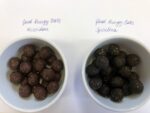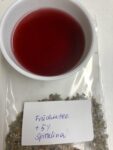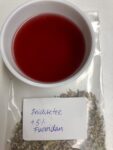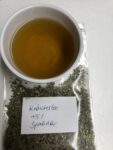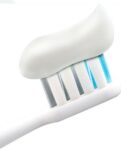Evaluation of algae- based formulation developed in CIRCALGAE into prototype applications
Algae-based formulations are gaining attention for their potential valorization in animal feed, human food and cosmetics, offering sustainability, nutritional benefits and novel functionalities. This way, the formulation developed in CIRCALGAE are tested for these applications.
Animal Feed: Focus on Piglet Feed
Algae are rich in proteins, essential amino acids, omega-3 fatty acids, vitamins and minerals, making them promising supplements in piglet diets. Earlier studies show that inclusion of algae meal or extracts can improve piglet growth performance, while also serving as a sustainable alternative to traditional protein sources. However, the trials in CIRCALGAE show only moderate outcomes in piglets so far. And higher inclusion rates for enforcing further zootechnical effects will be not economic viable. This way, further research within CIRCALGAE tries to identify additional health promoting effect in piglets, benefiting potentially a cost-effective higher inclusion rate.
Human Food: Extrudates, Tea, Pre-cooked Products and Meat Analogues
Algae are being successfully incorporated into a range of food prototypes. Notably, production of algae-enriched vegan snacks, based on legumes, appears to be feasible.
CIRCALGAE has also developed teas, pre-cooked products and texturized meat analogues using algae, capitalizing on their functional ingredients and health benefits. While the strong color and sensory characteristics of algae can limit consumer acceptance, innovative processing methods are considered within the project in order to improve sensory qualities. Overall, sound prototypes with promising nutritional profiles and acceptable sensory properties have been obtained for these food applications.
Cosmetics: Toothpaste, Hand Crème, Shampoo, Serum, Lotion, Shower Gel
Algae extracts are valued in cosmetics for their bioactive compounds, which offer antioxidant, moisturizing and anti-inflammatory properties. Applications include toothpaste, hand crème, shampoo, hydrating serums, body lotions and shower gels. However, progress in this cosmetic field has been delayed due to limited availability of algae samples, slowing down the development and testing of new formulations into these applications.
In conclusion, at the start of the fourth and last year of CIRCALAGE project, algae-based formulations show moderate but promising results in piglet feed, with more robust prototype development in food applications and some delays in cosmetics due to sample availability. However, seen the sound progress in optimization of the algae-based formulations, the coming year looks promising and it is expected to see all formulations incorporated into their respective prototype applications, reinforcing CIRCALGAE outcomes as a sustainable and multifunctional ingredient across these sectors.
